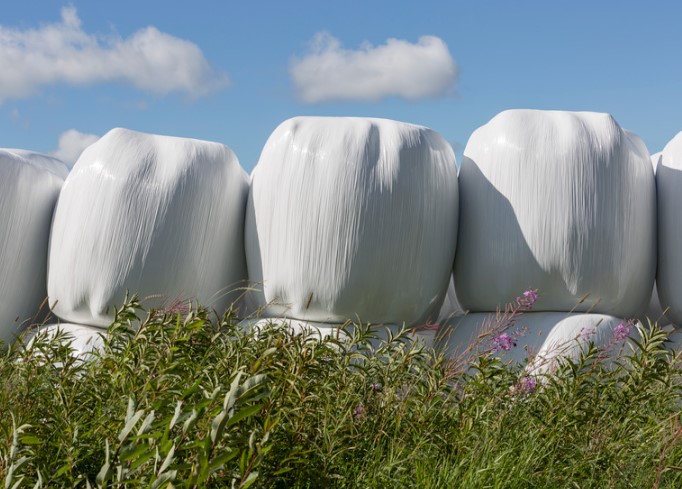Whole Crop for Healthier Soil and Happier Goats
Earth Trust is trialling a new harvesting system on our farm which aims to support our Farm Step tenants, Norton and Yarrow, whilst nurturing our soil health.
Whole crop harvesting can serve as an efficient and sustainable way to meet goats’ dietary needs while also contributing to effective farm management and resource utilisation. There is a symbiotic relationship between whole crop collection and soil health, and we’re exploring this innovative approach to pave the way for a more sustainable and productive farming future.
A Hungry Herd
Norton & Yarrow, the artisan goat’s cheese company, have been tenants on Earth Trust Farm since 2015 when they joined our Farm Step scheme. With just under 200 goats in their herd, they are pioneers in pasture-based goat farming in the UK, and are continually exploring new ways to enhance their sustainability.
The cost of animal feed has increased dramatically in the last few years, and goats need a steady supply of good quality hay as it makes up about 90% of their diet. (Each goat eats 1-2 kg of hay every day!) This is balanced with foraged green food, and supplements of minerals and vitamins.
Working in partnership with Earth Trust, Norton & Yarrow are experimenting with a new feed approach; 82 tonnes of cereal has been harvested from our field this summer, providing them with a year’s supply of goat feed.


Super silage
It’s crucial that the harvested crop is stored properly, to protect it from damp and contamination, and to preserve it as silage, so this has been plastic-wrapped, using a fully recyclable plastic, and stacked in pyramids to avoid rats from nesting between them.
Ensiling is a fermentation process driven by naturally occurring bacteria which, when in anaerobic conditions (hence the wrapping – to exclude oxygen) ferments the crop in a way which preserves it in a more digestible and nutritious form. It’s similar to the process harnessed for cheese making.
The most common form of silage in the UK is grass silage but arable crops and legumes can also be ensiled and various silages are used as a core part of the diets of many different types of livestock as a palatable and nutritious feed.
Invented in Europe in the 19th century, ensiling only really caught on here in the UK when it was pushed by the government during the second world war.
Food self-sufficiency was of utmost importance and by getting more farmers to ensile their crops, the improvement in feed value meant they were able to dramatically reduce the amount of imported grain that was needed in livestock diets. This crucially reduced the burden on trans-Atlantic shipping.
As farmers today, we face similar imperatives to reduce the use of grain and imported feed, but now in the context of sustainability and achieving net zero in agriculture.
The Art of Whole Crop Collection
Whole crop collection involves harvesting and utilising the entire plant, including stems, leaves, and grains. This method maximises the nutritional value and minimises wastage.
The additional carbohydrates and starch that this practice offers benefits the goats with increased fibre intake, promoting gut health by slowing the digestive process, and providing a diverse range of nutrients, enhancing their overall wellbeing.
Its positive impact on soil health is equally remarkable. Read more about it on our project page – Nurturing Farm Soil Health.
For the future
The next crucial step is to see if it passes the taste test – will the goats like it..?!
If successful, this project will not only provide a sustainable, quality food source for the herd, but will also help us to nurture the soil with arable crop rotations. This will prevent the problem of weed build-up by enabling us to cut six weeks earlier in the season, before the weeds have gone to seed.
